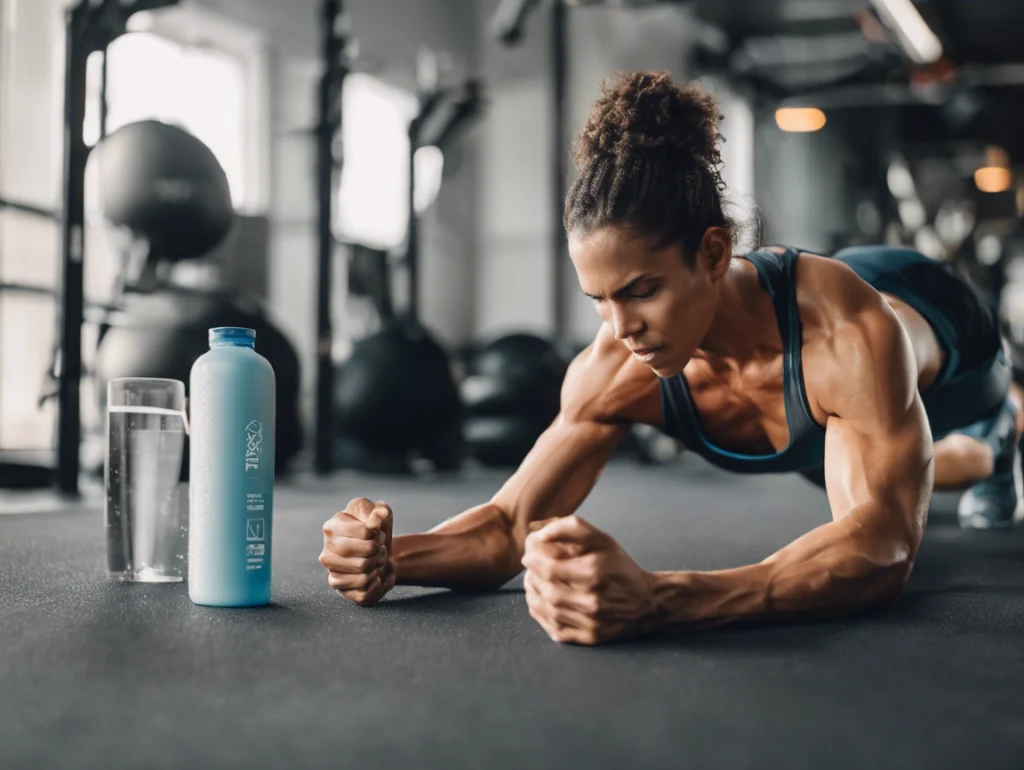Delayed-onset muscle Soreness, commonly known as DOMS, can occur 24 to 72 hours after an intense workout, causing stiffness, soreness, and discomfort in your muscles. While DOMS is a natural part of the muscle recovery process, it can interfere with your daily life and future workouts if not managed properly. Fortunately, there are effective strategies to reduce DOMS and speed up your recovery.
What is DOMS?
DOMS refers to the muscle pain and stiffness that occurs after unfamiliar or strenuous exercise, particularly when your muscles undergo eccentric contractions (when the muscle lengthens under tension, like during the downward motion of a squat). This soreness usually peaks 24 to 72 hours after the workout and lasts several days.
While DOMS is a sign that your muscles are adapting and getting stronger, it can be uncomfortable and affect your performance in subsequent workouts. Understanding how to reduce DOMS can help you stay consistent with your training and minimize discomfort.
Why Does DOMS Happen?
DOMS results from microscopic tears in your muscle fibers during exercise. The body responds by repairing these tears, which leads to muscle growth and strength gains. However, this process triggers an inflammatory response, leading to soreness, swelling, and stiffness.
How Can You Reduce DOMS?
Although DOMS is a natural part of muscle recovery, there are ways to reduce its intensity and speed up your recovery. Here are some effective strategies:
1. Warm Up Properly
A good warm-up prepares your muscles for exercise by increasing blood flow and improving mobility. This helps reduce the intensity of DOMS by gradually getting your muscles used to the movements you’re about to perform.
What should a proper warm-up include?
- Dynamic stretches: Arm circles, leg swings, and torso twists.
- Light cardio: Five to ten minutes of jogging or brisk walking.
- Movement-specific exercises: Lighter versions of the movements you’ll be doing, like bodyweight squats before weighted squats.
Warming up reduces the risk of injury and prepares your muscles for more intense activity, which can lessen post-workout soreness.
2. Gradually Increase Workout Intensity
One of the main causes of DOMS is jumping into an intense workout too quickly, especially if you’re trying new exercises. Avoid shocking your muscles by gradually increasing the intensity and volume of your workouts over time. This approach, called progressive overload, allows muscles to adapt slowly and reduces the chances of severe DOMS.
How to apply progressive overload:
- Start with lighter weights or lower intensity and gradually increase.
- Focus on form and control before adding more resistance.
- Slowly increase the volume (sets and reps) over time.
3. Hydrate During and After Workouts
Dehydration can worsen muscle soreness by impairing circulation and slowing the delivery of nutrients to your muscles. Ensuring proper hydration before, during, and after exercise helps flush out waste products like lactic acid and aids in the recovery process.
Tips for staying hydrated:
- Drink water before, during, and after your workout.
- Consider adding electrolytes if you’re doing an intense or long workout.
- Drink 8–10 glasses of water daily to support recovery.
4. Eat a Balanced Post-Workout Meal
Nutrition plays a crucial role in muscle recovery. Consuming a balanced post-workout meal rich in protein and carbohydrates can reduce DOMS by providing your muscles with the building blocks they need to repair and grow.
What should you eat post-workout?
- Protein helps repair damaged muscle fibers. Choose lean sources like chicken, fish, eggs, or plant-based proteins.
- Carbohydrates: Replenish glycogen stores used during your workout. Choose complex carbs like sweet potatoes, quinoa, or brown rice.
- Healthy fats: Reduce inflammation. Avocado, olive oil, and nuts are good options.
A meal containing 20-30 grams of protein and 40-50 grams of carbohydrates within 30 minutes to an hour after your workout can significantly improve muscle recovery.
5. Use Active Recovery
Light activity or active recovery on rest days can increase blood flow to your muscles, which helps remove metabolic waste and delivers nutrients for repair. Activities like walking, swimming, or yoga are excellent for active recovery.
Benefits of active recovery:
- Reduces muscle stiffness.
- Improves circulation.
- It speeds up recovery by promoting nutrient delivery to muscle tissues.
6. Foam Rolling and Massage
Foam rolling, also known as self-myofascial release, can help reduce muscle tightness and improve blood flow to sore muscles. Massage therapy is another effective method to reduce DOMS, as it helps break down scar tissue, increases circulation, and speeds up recovery.
How to foam roll effectively:
- Roll slowly over the sore area for 20-30 seconds.
- Apply gentle pressure, focusing on tight spots.
- Avoid rolling directly on joints or bony areas.
A 2015 study found that foam rolling significantly reduced DOMS and improved performance in subsequent workouts.
7. Cold and Heat Therapy
Cold therapy (ice baths or cold packs) helps reduce inflammation and numb soreness after a workout. In contrast, heat therapy (warm baths, heating pads) improves circulation and relaxes tight muscles. Alternating between cold and heat can be particularly effective in reducing DOMS.
How to use cold and heat therapy:
- Cold therapy: Apply an ice pack to sore areas for 15-20 minutes post-workout.
- Heat therapy: To loosen stiff muscles, use a heating pad or take a warm bath 24-48 hours after exercise.
8. Stretching
Gentle stretching can help relieve muscle tightness and improve flexibility, alleviating some of the discomfort associated with DOMS. Focus on static stretches after your workout, holding each stretch for 20-30 seconds.
Stretching Tips:
- Stretch major muscle groups used during your workout.
- Avoid overstretching or bouncing.
- Focus on breathing deeply to relax your muscles during each stretch.
9. Get Enough Sleep
Sleep is when your body does the most repair work. Aim for 7-9 hours of sleep daily to help your muscles recover faster. Sleep deprivation can prolong soreness and delay recovery.
Sleep tips for better recovery:
- Establish a consistent bedtime routine.
- Keep your bedroom dark and cool.
- Avoid screens at least 30 minutes before bed.
Key Takeaways
DOMS is a natural response to muscle exertion but doesn’t have to slow you down. Incorporating a proper warm-up, post-workout nutrition, hydration, active recovery, and adequate rest into your routine can significantly reduce the severity of DOMS. Remember, consistency is key—your muscles will adapt over time, and the soreness will diminish as your fitness levels improve.
Read Next…
- How the Body Uses Fat for Health and Fitness
- Best Body Metrics to Track for Health & Fitness Results
- How Does Protein Intake Affect Muscle Growth?
- Health and Fitness Benefits of Resistance Training
- The Purpose of a Hobby for Health and Fitness
External SEO Links:




